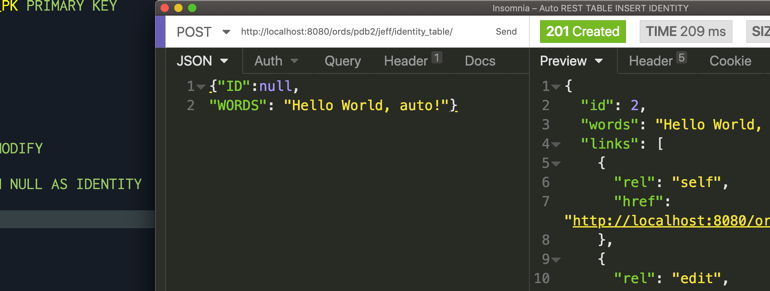Oracle Auto Generated Primary Key
In these cases, you can perform the same auto incremented primary key functionality for your column by creating a custom SEQUENCE, similar to the method used in older version of Oracle. Perhaps we’re particularly fond of even numbers but also have a strong distaste for anything smaller than 100, so we only want our primary key to be. Learn how to define an auto increment primary key in SQL Server. This data tutorial will explain basic table creation and information around using identity a.
Xp home product key generator. Similar to MySQL, PostgreSQL, Oracle, and many other relational databases, SQL Server is best utilized when assigning unique primary keys to most database tables.
The advantages to using numeric, auto incremented primary keys are numerous, but the most impactful benefits are faster speed when performing queries and data-independence when searching through thousands of records which might contain frequently altered data elsewhere in the table. With a consistent and unique numeric identifier, applications can take advantage of these faster and more reliable queries.
Basic Table Creation
Once connected to your SQL Server, you’d normally start by CREATING a new table that contains the the field you wish to use as your incremented primary key. For our example, we’ll stick with the tried and true id field:
The problem here is, we have no way of controlling our id field. When a new record is inserted, we not only must manually enter a value for id, but we have to perform a query ahead of time to attempt to verify that id value doesn’t already exist (a near-impossibility when dealing with many simultaneous connections).
Using Identity and Primary Key Constraints
The solution turns out to be using two constraint options provided by SQL Server.
The first is PRIMARY KEY, which as the name suggests, forces the specified column to behave as a completely unique index for the table, allowing for rapid searching and queries.
While SQL Server only allows one PRIMARY KEY constraint assigned to a single table, that PRIMARY KEY can be defined for more than one column. In a multi-column scenario, individual columns can contain duplicate, non-unique values, but the PRIMARY KEY constraint ensures that every combination of constrained values will in fact be unique relative to every other combination.
The second piece of the puzzle is the IDENTITY constraint, which informs SQL Server to auto increment the numeric value within the specified column anytime a new record is INSERTED. While IDENTITYcan accept two arguments of the numeric seed where the values will begin from as well as the increment, these values are typically not specified with the IDENTITY constraint and instead are left as defaults (both default to 1).
Oracle Select Primary Key
With this new knowledge at our fingertips, we can rewrite our previous CREATE TABLE statement by adding our two new constraints.

Oracle Auto Increment Primary Key Without Sequence
That’s all there is to it. Now the id column of our books table will be automatically incremented upon every INSERT and the id field is guaranteed to be a unique value as well.